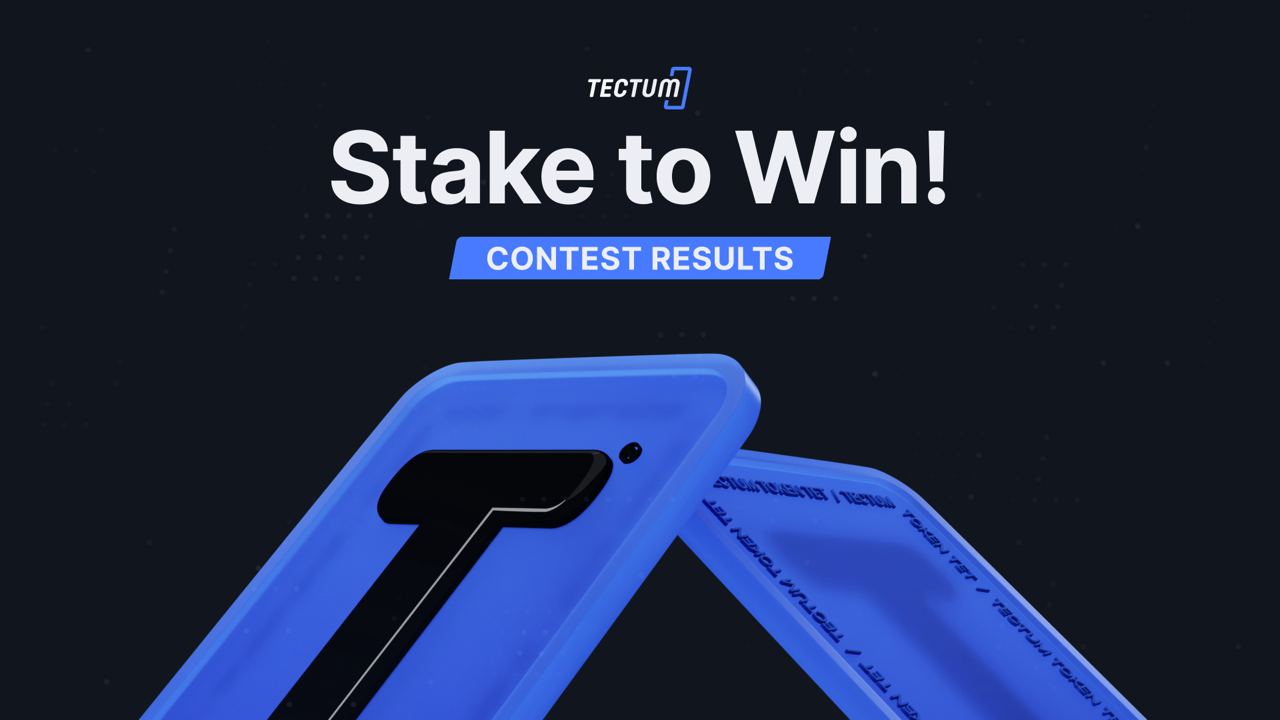Following the conclusion of this competition, Tectum is proud to announce the TET Staking Contest winners. Earlier in April, the team launched a mega staking exercise, where winners could earn up to $10,000 in prizes. In the usual fashion, our community members participated in significant numbers and several users locked their tokens within this period.

As mentioned in the announcement, the contest will run from the 2nd till the 30th of April. Once the competition ended, the team did an excellent job screening contestants to ascertain those eligible for the prize pool. This article outlines details of the winners of this contest and how we chose individuals in the final list
TET Staking Contest: Full List of Winners
As promised when announcing the TET staking contest, Tectum stated that there will be three categories of winners. This will ensure that everyone gets rewards, regardless of how many tokens they locked into a smart contract.
Fulfilling our promise, below are the winners of various categories:
First Group: User ID of 20 winners of $50
- 57000
- 52866
- 1442
- 57115
- 58728
- 48514
- 1384
- 44582
- 51511
- 43026
- 43545
- 54062
- 50644
- 2438
- 55785
- 2753
- 1384
- 59646
- 2753
- 53107
First Group: User ID of 10 winners of $100
- 59255
- 1987
- 59255
- 54026
- 56858
- 55166
- 59478
- 45553
- 50153
- 48514
Second Group: User ID of 2 winners of $500
- 58964
- 51511
Third Group: User ID of winner of $7000
- 56998
Tectum is dedicated to protecting user privacy, so we will only display the user ID of the winners. Everyone can check the list to confirm if they are on the final list.
More importantly, TET staking contest winners do not have to take further actions to receive their rewards. Tectum will deposit the prizes into the SoftNote Wallet of everyone who won. Do not share your login details or private information with anyone claiming to be from Tectum. No member of the team will send a message first to community members. People must protect themselves at all times.
Criteria For Selecting the Final Winners
With the winners announced, many people are probably wondering how we picked these lucky persons. For clarity and fairness, the team shares details of the selection process.
Before getting into the criteria for choosing winners, here is the complete list of all participants. In this regard, people can confirm that we did a thorough job. That said, below is a breakdown of the selection process.
As shown below, Tectum used two criteria for choosing winners:
- The amount of tokens staked
- A randomizer – Wheel of Names
By considering the number of tokens vested, Tectum ensured that everyone who met the criteria automatically became eligible for rewards. To level the playing field, the Wheel of Names randomizer will select the names of those who participated. With both features in place, no member of the team can change the outcome of selection.